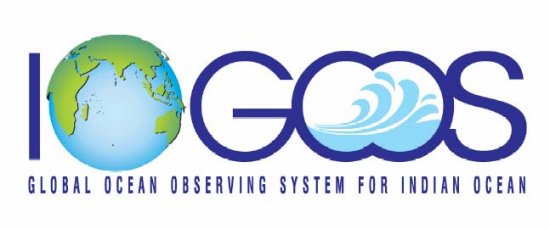ESSO - Indian National Centre for Ocean Information Services
(An Autonomous Body under the Ministry of Earth Sciences, Govt. of India)
Keystone Coastal EcoSystems
Project Title: Multi-scale Monitoring And Mapping Of Keystone Coastal Ecosystems Through Remote Sensing And Participatory In Situ Operations
Proponent: Dr.Greg Wagner, University of Dar es Salaam, Tanzania
Proponent: Dr.Greg Wagner, University of Dar es Salaam, Tanzania
- About
- Goals
- Methodology
- Progress
- Future Plans
- Countries
- To improve the safety and efficiency of marine operations;
- To more effectively control and mitigate the effects of natural hazards;
- To improve the capacity to detect and predict the effects of global climate change on coastal ecosystems;
- To reduce public health risks;
- To more effectively protect and restore healthy ecosystems;
- To restore and sustain living marine resources
- Input received at IO-GOOS II (Colombo) and the Coastal Zone Asia Pacific (CZAP) Conference in Brisbane, 5-9 September 2004
- Some additional input received through email
- Some basic information for Country Implementation Plans for 8 out of the 11 countries that have shown interest in the Project
- Budget and plans prepared for a Pre-project Planning Workshop to finalize the proposal with respect to methodologies, implementation plan, budget, responsible institutions/individuals etc.
- Budget drafted for parts of the project proposal.
- New work plan and timeframe prepared.
- Hold preliminary discussions at WIOMSA Symposium- early Sept 2005.
- Hold project planning workshop on 16 -20 February, University of Dar es Salaam (re-evaluate venue). The overall objective of this workshop will be to finalize the project proposal for submission to donors and discuss details of how to implement the project.
- Country Implementation Plans (Lead Implementing Institutions/individuals responsible, collaborating institutions)
- Identify funding sources for the project - CoML, IOC, POGO.
- Establish links to other projects.
- Seek support from IOGOOS to promote projects for funding by member countries (they should need to nominate relevant agency, funding source) important to do this before committing funding to that countries participation in workshop.
- Australia
- Bangladesh
- India
- Indonesia
- Iran
- Kenya
- Mauritius
- Reunion
- Sri Lanka
- South Africa
- Thailand
- Tanzania
About
Keystone coastal ecosystems are, by definition, very important or key components of the ocean and affect the health and well-being of the entire marine environment. The primary keystone ecosystems in the Indian Ocean region are coral reefs, mangrove forests, seagrass beds and rocky shores, which have been partially or severely degraded in most countries and which have therefore been selected as the targets of this project. Monitoring of these ecosystems will facilitate their proper management, which can have significant positive impact on the entirecoastal/marine environment
Goals
An integrated system of observations and analysis is needed to enable more rapid detection and timely predictions of the causes and consequences of changes in coastal ecosystems that affect their capacity to provide goods and services. In order to fulfil this need, the coastal module of GOOS aims at providing the data and information required to achieve six goals:
Methodology and Output
This project will be a multi-scale operation involving, firstly, large-scale remote sensing over wide areas; secondly, detailed remote sensing in particular areas of interest; and thirdly, community-based or participatory monitoring in situ in selected sites. Measurements at all three levels of monitoring will be repeated on a regular basis over time.
Data from all level of monitoring will be fed into GIS databases and processed to obtain a number of valuable outputs, including maps, baseline information, detection of change over time and predictions about future changes. Interpretation of these outputs will result in outputs at a higher level such as recommendations for management and/or further research, as well as information that can be used to increase environmental awareness of the respective communities.

Progress
Progress since IO-GOOS II at Colombo, Sri Lanka:

Future Plans
The Coastal Ecosystems Pilot Project is consistent with the Marine Impacts on Lowland Agriculture and Coastal Resources project of the COOP Implementation Strategy for the Coastal Module of GOOS. In order to progress the Coastal Pilot Project the following steps were identified leading up to a project planning and capacity building workshop.

By IOGOOS IV it is planned to report that the project proposal, including all country plans, is finalised and approaches made to international and national donors
Countries
The project has established some contacts made in the countries listed below, though there is a need to firm up these contacts and get commitments:




